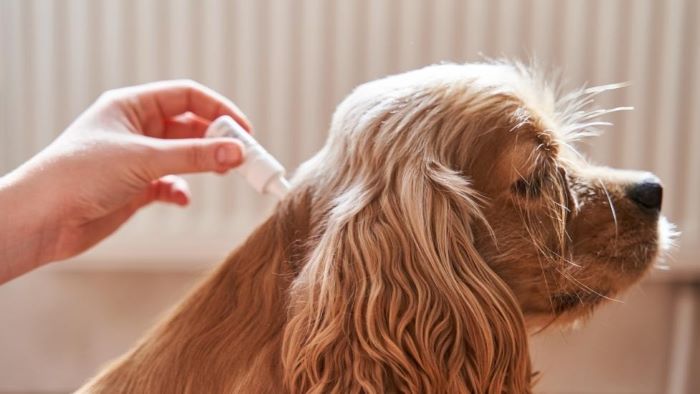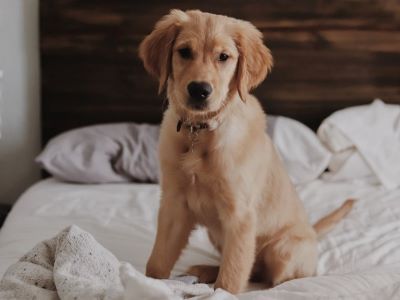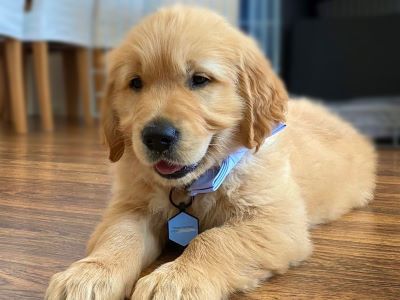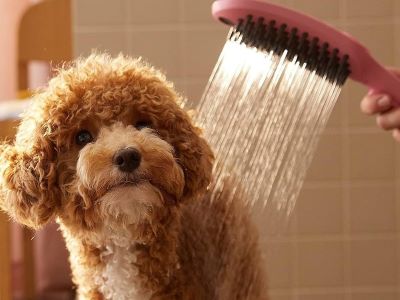Fleas are every dog’s worst nightmare! Fleas love hopping and causing a whole lot of itchiness and irritation. Hence treatment is important. And it’s crucial to wash your dog after treatment, But here’s the catch how long after flea treatment can I bathe my dog?🐶
How Long After Flea Treatment Can I Bathe My Dog?

Key Takeaways
- The waiting time before bathing your dog depends on the type of flea treatment used.
- Follow the manufacturer’s guidelines and consult your vet for the best results.
- Use a mild, dog-specific shampoo and maintain a regular bathing routine.
How Long After Flea Treatment Can I Bathe My Dog?
After applying flea treatment to your dog, it’s essential to wait for a specific period before giving them a bath to ensure the treatment remains effective. The waiting times vary depending on the type of flea treatment you’ve used. Here are some more details:
1. Topical Spot-Ons
Topical spot-on treatments are applied directly to your dog’s skin, usually between the shoulder blades. “These treatments contain active ingredients that spread through the skin’s oils, gradually releasing and effectively killing fleas“, says Dr Stephanie Howe at PetMD.
Waiting for 2 days⏲️ allows the treatment to be absorbed and dispersed, providing lasting protection.
2. Oral Flea Pills
Oral flea medications come in the form of chewable tablets or pills.💊 When your dog ingests the medication, it circulates through their bloodstream. Fleas are killed when they bite your dog, as the medication is transferred to the fleas through their blood.
Waiting for 24 hours ensures that the medication has had time to disperse and start working throughout your dog’s system.

3. Flea Shampoos and Dips
Flea shampoos and dips are applied during baths. These products often contain insecticides that target fleas on contact.
However, waiting at least 7 days📅 between treatments is necessary because some residual insecticide remains on your dog’s coat even after rinsing. This residual effect continues to eliminate fleas over time.
4. Flea Collars
Flea collars release active ingredients that repel and kill fleas. These ingredients disperse through the natural oils on your dog’s skin.
Waiting for one week after putting on the collar ensures that the collar has had sufficient time to distribute its chemicals, providing consistent protection against fleas.🧫
5. Natural Flea Sprays and Powders
Natural flea sprays and powders often use essential oils or botanical ingredients to repel and kill fleas. They work on contact with the pests.
Waiting for 24 to 48 hours⌛ allows the product to settle and effectively target fleas while avoiding washout during bath time.

If bathing your pup is a nightmare because they hate water, check our guide on how to bath a dog that hates water which has some great solutions to try.
Factors to Consider Before Bathing
Before giving your dog a bath following flea treatment, several crucial factors should be taken into account to ensure the safety and effectiveness of the treatment:
- Type of Flea Treatment Used: Different treatments have varying application methods and mechanisms of action. Understanding the specifics of your chosen treatment is essential to know how long you should wait to bathe your dog.🛁
- Manufacturer’s Guidelines: These guidelines offer precise instructions on application, including when it’s safe to bathe your dog. Deviating from these instructions may compromise the treatment’s efficacy or even harm your pet.🐕🦺
- Dog’s Age and Size: Puppies, senior dogs, or those with underlying health conditions may have different sensitivities to treatments. Consult your vet if you have concerns about the suitability of a specific treatment or bathing schedule for your dog’s individual circumstances.
- Severity of Infestation: If the infestation is particularly severe, it may be necessary to adhere strictly to the waiting period to ensure that all fleas are eliminated. Delaying the bath can help achieve better results in such cases.
- Environmental Factors: Factors like the climate and the likelihood of reinfestation, should also be considered. In areas with a high risk of flea reinfestation, it may be advisable to wait the full recommended waiting period to ensure ongoing protection[1].🐶
If in doubt, always consult your vet for personalised advice tailored to your dog’s specific needs.

Bathing After the Waiting Period
After eagerly watching the clock tick away the waiting period following your dog’s flea treatment, it’s time to make bath time a fun experience! Here’s how:
1. Safe Bathing After the Waiting Period
Once the waiting period specified for your particular flea treatment has passed, you can safely bathe your dog as you typically would.
This period allows the treatment to be fully absorbed and distributed, maximising its efficacy against fleas.
2. Choose a Mild Shampoo
When it’s time for the bath, opt for a mild, dog-specific shampoo. Mild shampoos are gentle on your dog’s skin and coat, reducing the risk of irritation or adverse reactions.
Using harsh soaps or shampoos with strong chemicals can potentially interfere with the effectiveness of the flea treatment. Therefore, it’s crucial to select a product that complements the treatment’s action rather than counteracts it.
3. Products to Avoid
Many standard soaps🧼🫧, particularly those designed for humans, can contain ingredients that could wash away or neutralise the flea treatment. These soaps may have harsh chemicals or fragrances that are not suitable for your dog’s sensitive skin.
Stick to dog-specific shampoos or those recommended by your veterinarian to ensure compatibility with the flea treatment.

4. Maintain Your Normal Frequency
Following the initial waiting period, it’s advisable to return to your dog’s regular bathing routine. Maintaining a consistent bathing schedule helps keep your dog clean and comfortable.🧹🧼
However, over-bathing can strip essential oils from your dog’s skin and coat, potentially making them more susceptible to fleas. So, strike a balance by sticking to your dog’s normal bathing frequency.⌚
When bathing your dog after flea treatment, it’s best to use the best portable dog washer uk options, to make washing gentle and convenient.
FAQs
❓How Long After Flea Treatment Will Fleas Be Gone?
It has a very good residual effect which means that it will continue to work for some time if left undisturbed. Adult fleas will be killed within a few days but the floor should not be vacuumed, swept or washed for at least two weeks after treatment because there will still be eggs which will continue to hatch.
❓Do Dead Fleas Fall Off?
Dead fleas and flea droppings will fall off your dog as you treat them so having a drain is helpful. Consider removing fleas on your dog outdoors or in a shower or tub. This makes it easier to access water and clean up afterwards. Bathing your pet to get rid of fleas can be helpful.
❓Does Bathing a Dog Get Rid of Fleas?
One of the first solutions to get rid of fleas is to bathe your pet. Just lukewarm water, or water and mild soap, can help get fleas off your pet’s fur and skin. The dish soap can help to drown adult fleas. If you’re thinking about using a flea shampoo or something similar, talk to your veterinarian first.
Conclusion
Treating your loyal companion to prevent flea infestations is one of the best things you can do as a dog owner. While it may seem harmless to bathe your dog🐶 shortly after applying flea prevention, doing so can dramatically reduce the effectiveness of the treatment.
Always wait the recommended time period before lathering up your dog, Patience is the key. Allow sufficient time for the treatment to fully absorb before rushing into a bath. We all want what’s best for our dogs, and that means letting flea treatments work to their full potential.
A little time goes a long way when protecting your dog. Stay the course and you’ll both come out flea-free on the other side!💖
Once the waiting period is over, you can give your dog a bath following proper technique. Be sure to use lukewarm water, a mild shampoo, and rinse thoroughly. Check out our guide for tips on how to give a dog bath in the tub to make bath time easy and effective.
Reference:
- Meyers, H. (2023). How to get rid of dog fleas. American Kennel Club.



